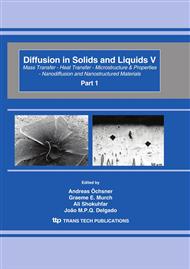p.573
p.579
p.584
p.590
p.596
p.602
p.608
p.618
p.624
The Investigation on Optimum Corrosion Protection Potential of STS 316L in Seawater
Abstract:
Austenitic stainless steels have problem such as pitting, intergranular corrosion and stress corrosion cracking, which causes severe damage of structure in spite of high toughness and mechanical strength. To minimize these disadvantages in offshore structures demand of STS 316L which has small amount of C and has Mo is increasing. In this paper, the electrochemical experiments are executed to evaluate the durability at various protection potentials on stress corrosion cracking and hydrogen embrittlement of STS 316L in natural sea water environment. The polarization trend for STS 316L shows the effects of concentration polarization due to dissolved oxygen reduction reaction and activation polarization due to hydrogen gas generation. The turning point of two reactions in the polarization curve presented -0.92 V (vs. Ag/AgCl). The lowest current densities in the potentostatic test and non-correded surface condition of specimens by SEM analysis presented at potentials of 0 ~ -0.9 V and 0.4 ~ -0.9 V, respectively. Synthetically, the optimum corrosion protection range without stress corrosion cracking and hydrogen embrittlement is concluded with the potential range of -0.56 V ~ -0.92 V.
Info:
Periodical:
Pages:
596-601
Citation:
Online since:
April 2010
Authors:
Price:
Сopyright:
© 2010 Trans Tech Publications Ltd. All Rights Reserved
Share:
Citation:


